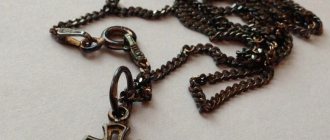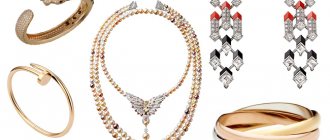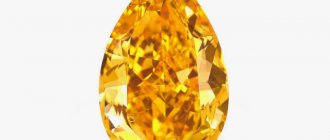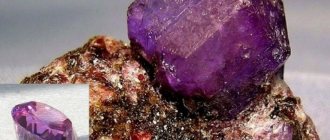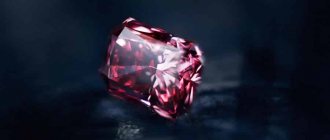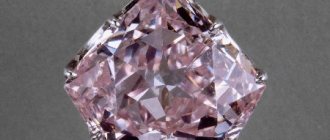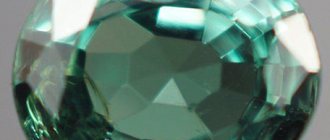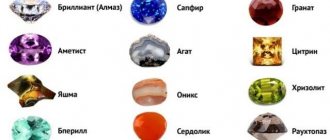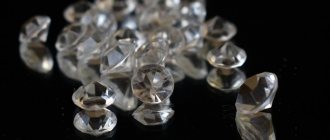Place Vendôme in Paris is the jewelry heart of France. Photo: paris-hotel-mansart.com The rapid rise of French jewelry took place in the 17th century. The whimsical art of Baroque brings into fashion products decorated with fine carvings and voluminous embossed relief. Pearls are especially popular in jewelry. Interest in painting in jewelry arose: bright combinations of multi-colored enamel with gold and precious stones added even more resemblance to the creations of great artists.
Advertising - Continued below
At the end of the 19th - beginning of the 20th centuries, Art Nouveau rose to the top - a style in which France conquered everyone without exception. Jewelry from this trend is not just elegant and beautiful - it hypnotizes the viewer with the smoothness of its lines, their natural interlacing and airiness of shapes.
But let's go back to our time and talk about works of jewelry for which you can drop everything and rush to France. And we will start with brands familiar to many, which have consistently proven their exclusivity for more than one century.
Lalique
Corsage decoration with precious jasmine from Rene Lalique.
1899−1902, Rene Lalique Museum Rene Lalique is perhaps the brightest and most famous representative of modern jewelry. This artist always wanted to create something new, without being afraid to break the usual patterns. And he succeeded: first in the jewelry world, and then in glass production. Thanks to his enormous talent and exorbitant hard work, Lalique became a real nugget of French Art Nouveau (aka Art Nouveau).
One of the revolutionary techniques in Lalique’s work is the use of non-precious materials: copper, brass, turtle shell, horn. Many museums around the world are proud to have works by this master in their exhibitions. Rene Lalique became famous not only as a jeweler - he later became interested in working with glass and subsequently devoted all his creative energy to this material: perfume bottles, figurines and vases did not leave anyone indifferent. In recent years, Rene Lalique has been involved in large-scale work: decorating restaurants and hotels.
Advertising - Continued below
Now Lalique jewelry can be purchased in many cities in France. So, in Paris the boutique is located at 11 rue Royale. On the company's official website you can get complete information about store opening hours.
If buying expensive jewelry is not your goal, but you just want to be inspired by beauty, then in Alsace, in the village of Wingen-sur-Moder in the Vosges Mountains, where Lalique built his glass factory in 1919, there is a museum of the same name, which opened in 2011 . Here you can see about 500 unique works of the master and learn more about René Lalique himself.
Eccentric muse
The turning point in the artist’s fate, when he was literally covered in fame, happened in 1889, during the World Exhibition in Paris (the same one for which the Eiffel Tower was built). Lalique's jewelry was noticed by Sarah Bernhardt - the famous actress was so impressed that she bought everything in bulk. It was impossible to think of a better advertising move. Bernard was always in sight. The brilliant actress loved to tickle the public's nerves - both with her appearance and her extravagant personal life. Now she did all this in elegant jewelry created by Lalique. Sarah became the main client of his jewelry studio.
The meeting with Sarah Bernhardt turned out to be fateful for the jeweler. It was a tandem of two eccentrics. Rene Lalique made luxurious “collars”, massive earrings, tiaras and stage jewelry for Bernard. One of the most famous works dedicated to the actress is the “Dragonfly Woman” brooch, in which female beauty is presented as something beautiful and dangerous. The female dragonfly, as if dozing in anticipation of a victim, has transparent weightless wings, encrusted with precious stones, and massive golden claws. Given the large size of the brooch (23 x 26.5 cm), the wings were attached to miniature hinges and could move.
Rene Lalique. Corsage decoration “Dragonfly Woman”. 1897–1898
There was some perversity in this - decorating women's outfits with reptiles and insects. But these were the demands of Art Nouveau: life flirted with death, beauty loved ugliness. The images of artists of that era often coincided. It is no coincidence that the female insects in the works of Rene Lalique are so similar to the tired beauties of Gustav Klimt. Jewelry was then generally perceived as a kind of painting, only painted not in oil on canvas, but with emeralds on gold. Or on glass, as is the case with Lalique.
By the way, another favorite jewelry designer of Sarah Bernhardt was the Czech artist Alphonse Mucha. He not only drew posters for the actress, but also created sketches of jewelry, which were then brought to life by jeweler Georges Fouquet, Rene Lalique’s main rival.
Cartier
Cartier watch with panther: white gold, onyx, diamonds.
It all started in 1847, when the young ambitious Louis-François Cartier bought the workshop from his mentor Adolphe Picard in order to realize his ideas in the field of creating jewelry. In contrast to the Art Nouveau style, which was then gaining popularity, the artist chose for his work the Art Deco direction with its characteristic geometric, strict forms. It was difficult not to notice the extraordinary abilities of the young Cartier, so soon almost the entire elite of French high society became clients of his workshop.
What was special about his jewelry? Cartier introduced animalistic images into fashion: butterflies, beetles, scorpions. Using one of the symbols of Ancient Egypt, he created his scarabs. Before Cartier, using images of insects in jewelry was considered bad manners, but he presented them so skillfully that he managed to make the public fall in love with his jewelry. Louis-François was also one of the first to actively work with platinum, replacing the usual gold and silver with it.
Advertising - Continued below
Visitors to the French capital can head straight to the main Cartier boutique in the center of Paris on the Champs-Elysees, which has recently been renovated and once again shines with its unique chic. However, do not forget that the branded stores of the jewelry house are located in many cities in Europe and beyond. Any necessary information about their location and range can be found on the official website.
Boucheron
Hôtel Particulier ring from the Boucheron high jewelery collection.
In general, there are quite a few famous jewelry dynasties in France. And Boucheron certainly is one of them: their jewelry captivates with its beauty, and the history of this brand goes back more than 150 years. The Boucheron jewelry house itself was opened in 1895, but the founding father of the glorious dynasty of jewelers, Frederic Boucheron, began his work even earlier - 1853−1870. Boucheron's clients have included an Indian prince, the Shah of Persia, the Russian royal family and celebrities such as Sarah Bernhardt and Edith Piaf.
This well-deserved success is due to the tireless work and talent of the jewelry house’s artists. Frederic Boucheron skillfully combined in his products such materials as platinum and ivory, diamonds and wood, gold and tortoiseshell, steel and glass. The master loved to create jewelry in the so-called Marie Antoinette style, which corresponds to the style of the 18th century. In addition, Frédéric Boucheron was very sympathetic to Egyptian and Chinese motifs, which were very popular during that period.
Ambaji Shinde
At one time, it was Ambaji who radically influenced the style and design of jewelry from one of the most famous jewelry houses in the world, Harry Winston. Back in 1962, the founder of the brand lured a designer who worked for an Indian jewelry company. And already in 1966, Shinde headed the Harry Winston design studio in New York.
Van Cleef & Arpels
Van Cleef & Arpels jewelery watch with hidden dial.
The history of another French brand began with a very pleasant event - a wedding. Representatives of two families, whose main activity was trading in precious stones, tied themselves to Hymen. Estelle Arpels and Alfred Van Cleef got married in 1896. And in 1906, Van Cleef teamed up with his wife’s brothers and opened a jewelry store.
To create magnificent pieces, the young brand sourced the finest gemstones from all over the world. Van Cleef & Arpels did not follow the ever-changing fashion, preferring to create it, which they did very well. The success of their brilliant products allowed them to expand their business - the first boutique in America opened in 1939. Van Cleef & Arpels is considered the inventor of the so-called “invisible” setting (from the English “invisible”), when precious stones form a single surface without burdening the composition of the product with additional castings.
If you find yourself in Paris, you can visit the Van Cleef & Arpels boutique at 20−22 Place Vendôme. Stores in other cities and countries can be found on the brand’s website.
In general, I would like to note that if you want to be in the very heart of the jewelry world of France, then you can safely go to Place Vendôme - this is where many famous jewelry houses were born, and those that opened in another place certainly appeared there later. On the square you can find boutiques of both star brands and young talented designers.
Advertising - Continued below
Stefan Hemmerle
In 1893, brothers Joseph and Anton Hemmerle founded a company of the same name in Munich, which earned fame for creating crowns and medals for the top officials of the country and the army.
A century later, Stefan and his family rethought the concept of the respected brand and focused all their efforts on applying innovations and unconventional techniques to the jewelry business. Hemmerle began to resort to unusual metals in combination with high-quality gemstones: for example, they could easily set a flawless and D-color diamond in iron or copper.
Over the past 15 years, the brand, led by Stefan Hemmerle, has produced many amazing pieces, featuring incredibly realistic flowers and tempting fruits, using materials that would seem to have no place in jewelry. From copper flora and brass fauna to aluminum jewelery with diamonds and sapphires (the latter included in the 2021 AL collection), Hemmerle's imagination and boldness knows no bounds.
Paris Flea Markets - Treasure Hunt Game
If you want something special, then do not forget that Paris is a multifaceted city, you can find almost everything here. So, opposite the Louvre, on the Rue de Rivoli, there is an antique gallery that sells a lot of jewelry (mostly vintage), the average cost of which is about 450 euros.
Flea markets will also provide many discoveries, where you can find the most unusual and unexpected products. So take cash (cards are not accepted in the markets even in Paris), be patient and go ahead in search of your treasure. Just remember that many of the markets are only open on weekends.
The addresses and opening hours of the most famous flea markets in Paris are as follows:
Market Marché St Ouen/Porte de Clignancourt
marcheauxpuces-saintouen.com
Advertising - Continued below
Flea market Saint-Ouen. Photo: blog.bufettaburet.ru
Address: Go to Porte de Clignancourt metro station (Line 4), then follow the road signs. The market is located between the 18th arrondissement of Paris and the northern borders of the St. Ouen district. (Google maps)
Market opening hours: 9:00–18:00 on Saturdays; 10:00−18:00 on Sundays. Free admission.
Market Marché aux Puces de la Porte de Vanves
pucesdevans.typepad.com
Flea market Porte de Vanves. Photo: ispywithmygreeneyes.wordpress.com
Address: Avenue Georges Lafenestre and Avenue Marc Sangnier, 14th arrondissement of Paris. Porte de Vanves metro station (Line 13). (Google maps)
Advertising - Continued below
Market opening hours: 7:00–14:00 every Saturday and Sunday. Free admission.
Market Marché aux Puces de Montreuil
Flea market Porte de Montreuil.
Photo: parisdimanche.com Address: Avenue de la Porte de Montreuil. Porte de Montreuil metro station. (Google maps)
Market opening hours: 7:00–19:30 on Saturdays, Sundays and Mondays. Free admission.
Jewelry Museum in Paris
Perhaps purchasing jewelry is not part of your plans, then you can simply admire the beautiful works at the Paris Museum of Decorative and Applied Arts. This one of the richest museums in Europe is located in the western wing of the Louvre, and opened its doors to its first visitors back in 1905. A variety of luxurious furniture, dishes, accessories and, of course, jewelry from different eras will tell about the lifestyle of the rich and famous residents of France. It is also another place where you can enjoy the creations of René Lalique.
Most likely, you will not have any difficulty finding the famous Louvre, but, just in case, we will mention the address of the museum: 107, rue de Rivoli.
France is one of the brightest countries in Europe, and it is difficult to imagine jewelry tourism without visiting this extraordinary romantic place.
Your own scents
Today's Lalique is a symbol of luxury and grace. The company creates tableware and decorative items, furniture and jewelry. Just like a hundred years ago, all these objects bear the stamp of the unfading passion of René Lalique. Chests of drawers are decorated with naked young ladies, vases are framed with snakes and dancing bacchantes, dragonflies and bird feathers are encrypted in necklaces.
Since 1992, on the initiative of Rene Lalique's granddaughter Marie-Claude, the company began producing its own perfumes. Of course, each fragrance has its own unique bottle, worthy of museum collections. Some bottles replicate figures for car radiators - for example, in the Lalique men's perfume collection for Bentley or Jaguar.
